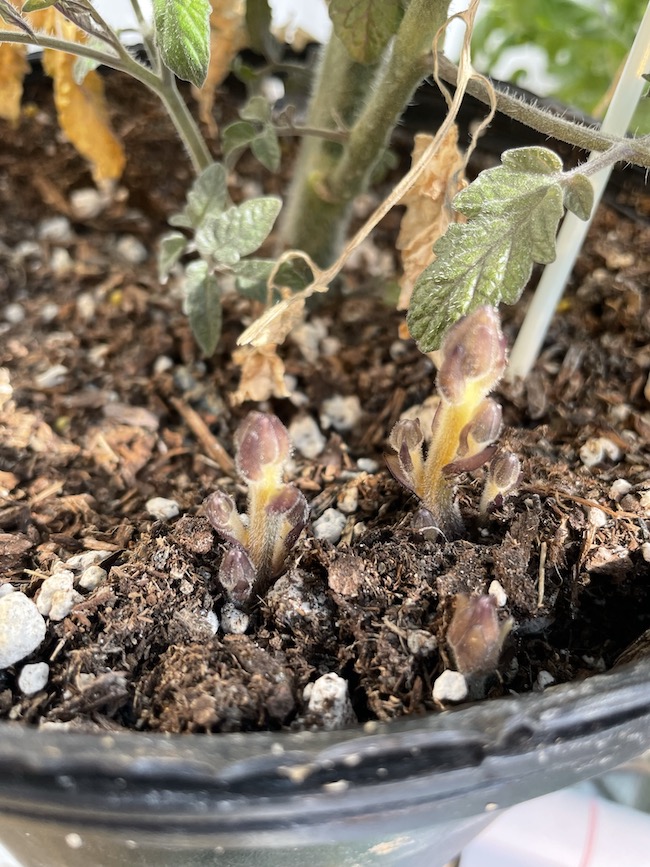
Features
Weeds
Resurgence of parasitic weed threatens California tomatoes
October 3, 2023 By Emily C. Dooley, UC Davis
 Stalks of Orobanche ramosa emerge from soil as part of research in the Contained Research
Facility at UC Davis, where scientists work in a secure environment. Photo courtesy of Pershang Hosseini, UC
Davis.
Stalks of Orobanche ramosa emerge from soil as part of research in the Contained Research
Facility at UC Davis, where scientists work in a secure environment. Photo courtesy of Pershang Hosseini, UC
Davis.
At first glance, Orobanche ramosa looks like an interesting blossoming plant, one that could add a unique flair to flower arrangements. But it’s a parasitic weed that attaches to roots, sucks out nutrients and is threatening California’s lucrative $1.5 billion processing tomato industry.
The weed’s tiny seeds — smaller than finely ground pepper — can survive in soil for many decades and be carried by wind, water, soil transfer and even footwear. If found attached to crop plants and reported to the state, farmers are required to destroy the field before harvest, taking large losses not covered by crop insurance.
Its resurgence is a concern for state regulators and industry, which is helping fund multidisciplinary research at the University of California, Davis, on ways to detect, manage and fight the weed.
“Most of the damage occurs before you can see it,” said Brad Hanson, a professor of co-operative extension in plant sciences, who is involved in much of the Orobanche research at UC Davis. “There’s a lot of ripples to the problem. We could see it spread to other crops and other regions in the state if it’s not managed.” |READ MORE
Print this page